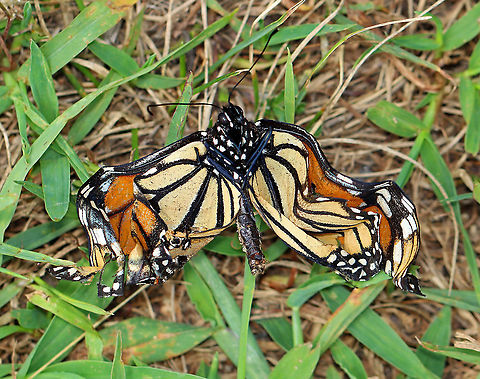
Behavior
''Ophryocystis elektroscirrha'' is usually transmitted from females to their offspring when the females scatter spores on their egg chorions and surfaces of milkweed leaves, the host plant of monarchs and queens, during oviposition . Male butterflies can also have O.e. disease, and will scatter the dormant spores onto Milkweed leaves as they fly around, and can scatter spores onto a female butterfly during mating.The female that has spores scattered onto her during mating does not have the disease, but now can scatter those dormant spores onto the eggs she lays or onto Milkweed leaves. Milkweeds contains toxins that partially protect monarch larvae. The spores are ingested by the larvae. After they enter a host's gut, the spores open and emerging sporozoites penetrate a larva's gut wall and migrate to its hypoderm , where they undergo two phases of vegetative reproduction. After the caterpillar pupates, ''O. elektroscirrha'' starts reproducing sexually. Three days before adults emerge, developing parasite spores can be seen through their pupal integuments. The adult butterflies emerge covered with spores, mostly on their abdomens. Parasites do not continue to replicate on adult butterflies and spores must be eaten by larvae before they can cause new infections.References:
Some text fragments are auto parsed from Wikipedia.